We learned (thanks, Denny) that Arkady Shipunov passed away last week. He began work at Tula arsenal in 1950, and was chief designer of its instruments bureau from 1962 until 2006 – quite the long reign! He was a prodigious inventor whose work was mostly on large machine guns and missile systems, but he was also the co-designer of the GSh-18 (Gryazev-Shipunov) pistol developed by Tula in the late 1990s.
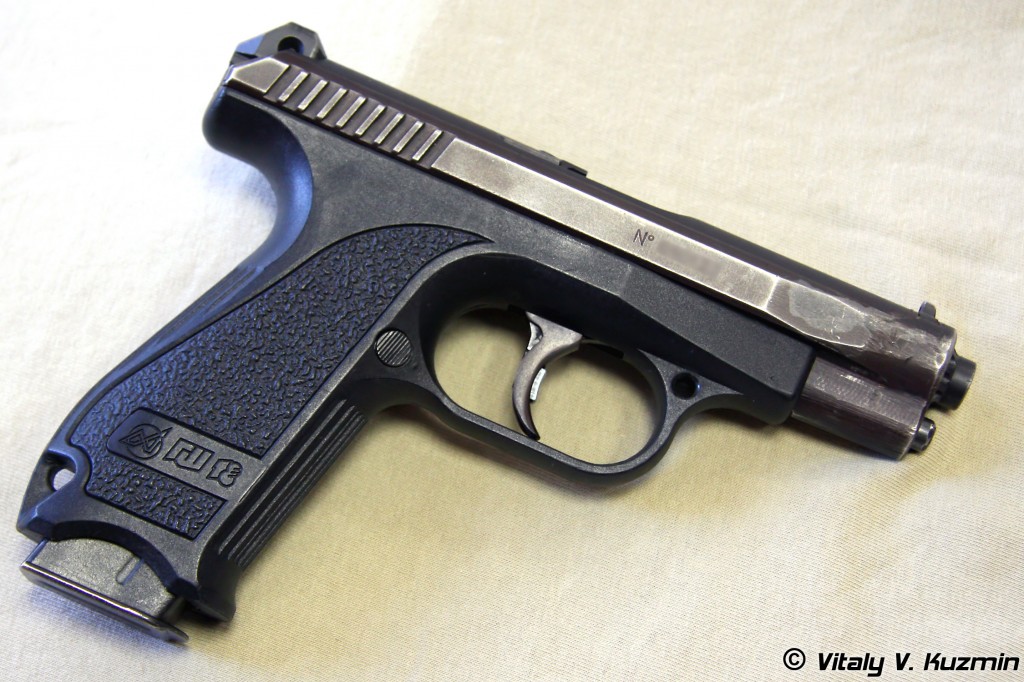
The GSh-18 is one of the more recent additions to the small fraternity of rotating-barrel handguns (see also: Roth-Steyr 1907, Obregon, CZ-24, Boberg XR9, and others). We haven’t had the chance to handle one ourselves, but the design is pretty interesting. While most rotating-barrel pistols use two or three lugs, the GSh-18 uses no less than ten, arrayed equally around the barrel. This gives the barrel a rotation arc of just 18 degrees, and gives it a very strong lockup with so much lug surface area.
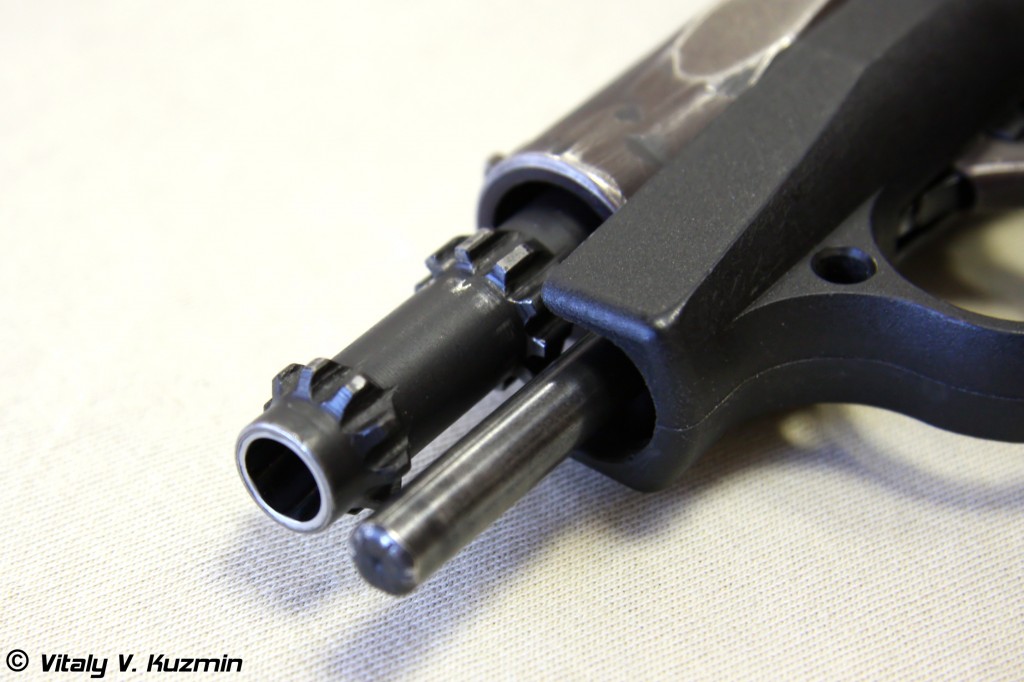
Details about the mechanism are a bit sketchy, but we suspect the beveled set of lugs just behind the barrel are intended to seal the slide against dirt and grime getting in and fouling the locking lugs. Despite the apparent vulnerability to dirt getting in, the pistol appears to have passed Russian military trials with flying colors. The GSh-18 on paper appears to be an excellent handgun:
- Good 3-dot sights (optionally including night sights)
- Nice low bore axis
- Polymer frame (for a total weight of just 16.5 ounces unloaded)
- Reversible mag release to accommodate left-handed shooters
- Trigger-mounted safety for simple loaded carry
- Ejector doubles as loaded chamber indicator
- 18+1 capacity of 9mm cartridges
In addition, the magazine of the GSh-18 is of the double-feed design, meaning that cartridges feed alternately from the left and right sides, instead of being forced into a single center column at the top of the magazine (the Stechkin APS also used double-feed magazines). This double-feed system has long been recognized as superior in submachine guns, as it reduces spring pressure on the cartridges, making for more reliable feeding and easier loading of magazines.
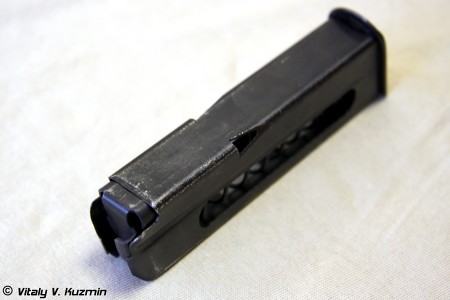
The one concern we have about the design – and again, this is without having actually handled one – is the rather complex disassembly. The design looks great on the outside, but it has a lot of independent parts that have to come out for basic takedown. Most other modern pistols have a nice modular construction, where the slide comes off as a complete unit with no fuss, but the GSh-18 requires several sequential parts to be removed.Connecting pins, non-captive springs…it’s just not very elegant:
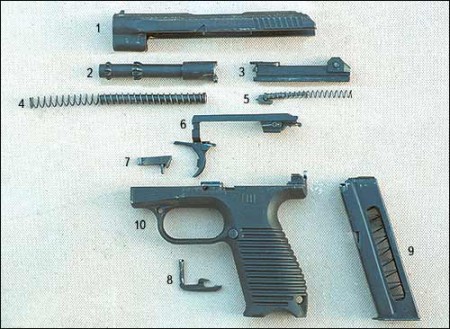
You can see a promotional video (in Russian) about the GSh-18 here, produced by Tula (where the guns were designed):
Now, there is another element to the GSh-18 that we need to talk about, and that is its ammunition. Apparently one of the design criteria for military service was armor penetration capability, and the GSh-18 was designed around a specific 9x19mm AP cartridge, designated 7N31. It operates at higher pressure than standard 9mm ball (roughly +P+ pressures, although Tula promo material would have you believe it’s higher), and throws a lightweight projectile at pretty high velocity. Specifically, a 65 grain hardened steel core bullet at 1970 fps, which will perforate NIJ Level III soft body armor, or 8mm of mild steel plate at close range. In today’s world of increasingly-standard use of good body armor by combat troops, that would seem like a reasonable requirement to have for a sidearm – although we do wonder how many combat troops would be wearing soft armor, rather than either rifle plates or no armor. However, the 7N31 case is outwardly identical to standard 9×19, so the pistol can be used with standard ammunition as well.
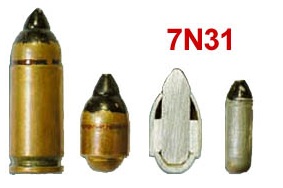
You can see a bunch more photos of the GSh-18 below, or download the whole set in high resolution as a zip archive:

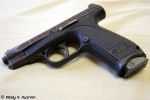
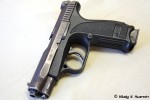
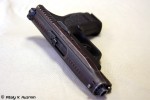
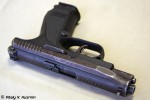
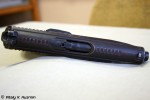
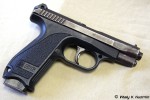
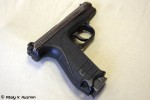
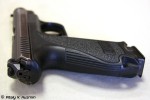
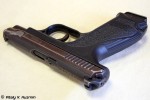
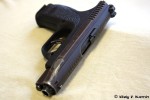
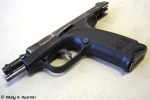
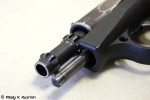
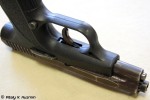
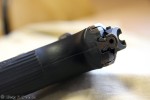
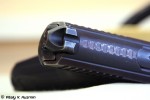
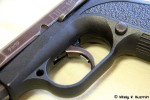
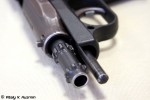
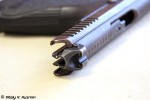
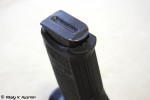
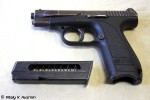
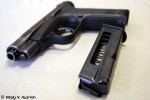
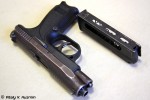
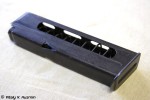
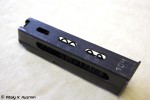
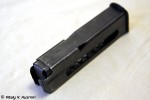
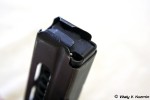
Based on the grip style and ammunition it appears to be a companion pistol to the ПП2000 (pp2000), they may also be able to share magazines.
I heard from those who had experience with it, that the problem with magazines on this gun was that in order to pack 18 rounds in such a tight package they had to make mag spring ridiculously strong, so, short of having a loading device (or being spetsnaz) you are unlikely to load more than 13-14.
And also it has a very sharp recoil, which tries to push the entire gun back, thanks to polymer frame. #glockproblems
Stupid question here….. How the hell can I get
ahold of one?
I was trying to get my hands on one for a few years in Canada. Then when our importer had just about convinced them on a run for Canadian legal barrels after years of trying – SANCTIONS – dammit. I’m hoping when those get lifted it’s something I can try for again.
Unfortunately Canada does NOT have a right to keep and bear arms. Your leader is anti gun except for himself of course.I doubt you will be able to get it now unless you move to the U.S.
I fired a Sport 2 version of this at the Kalashnikov Museum and iwas superb. Its recoil impulse is especially nice because of the low bore axis.
These are absolutely fabulous pistols, as far as shooting goes. Loading the 18 rounds is a tad brutal on the thumbs, but no more so than many few others I can think of. The magazine design is great, save for the open windows, which probably save weight more than anything else. The low bore axis makes the recoil & muzzle flip manageable to the point of this being “pure fun to shoot”. The Arsenal Strike One handles similarly, but Russian sanctions over Ukraine has made these pistols pure unobtainium, and the Stryke Ones expensive. The Arsenal pistols had to be made in Italy & Germany, to work around the sanctions. The lockup on the Arsenal is totally different. I am not sure how, but an associate who is in one of the branches of our military, was issued a GSh-18, I assume for a “sanitized mission”, where all weapons, clothing, and gear, have zero association with anything in or about the USA. The 7N31 ammo was also provided, with the pistol. I could not help but wonder how a tungsten penetrator would work in place of the hard steel center pin. Sadly, the example I fired has been turned back in, and it could be anywhere, by now. It could be on a mission, stowed away, or part of the frame on a Hyundai car. I do have one live round of 7N31, and one inert round. Both are useless without the gun. The ammo seems exceptionally crude looking, to my eyes. It kind of goes right along with the field stripping procedure for this gun. Being an ungainly hodge podge of parts whose disassembly procedure is so ill conceived, it’s likely no other military would even consider adopting this pistol, but it works for the Russians. Despite that, it is a very ergonomically friendly design, and just feels really good in the hand. Alas, I was not allowed to fire this extensively, and no one was commenting on how often it must be field stripped for cleaning. They seem to really like the handling of the gun. This was a really cool pistol. The Grach, is just another Sig P210 derived CZ 75 knockoff. Also a nice little gun, but hardly as cool as the GSh 18. The Grach was available in Canukistan up north, for a nice price, but not here in the USA. Now we have sanctions again. Oh good! This has also affected the Arsenal Stryke One’s availability, another Russian designed gun with a very low bore axis, and a rather unique action. Both pistols feel very similar in my hands, until you pull the trigger. Then there are some differences. The GSh 18 has slightly better recoil to me. Accuracy is very good, and likely better than I can appreciate. Even with the +P+ ammo, it’s a soft shooting pistol.
Some Russian reviewed opinion is that the pistol was a side project — more like an experiment and included several design concepts just for fun. And it was not accepted by the Army, it just participated in the Army selection to balance Grach or whatever.
By the way, it was designed by Gryazev and Shipunov, two designers of aircraft guns which implies much.
https://www.youtube.com/watch?v=vhZAc_F2gw8